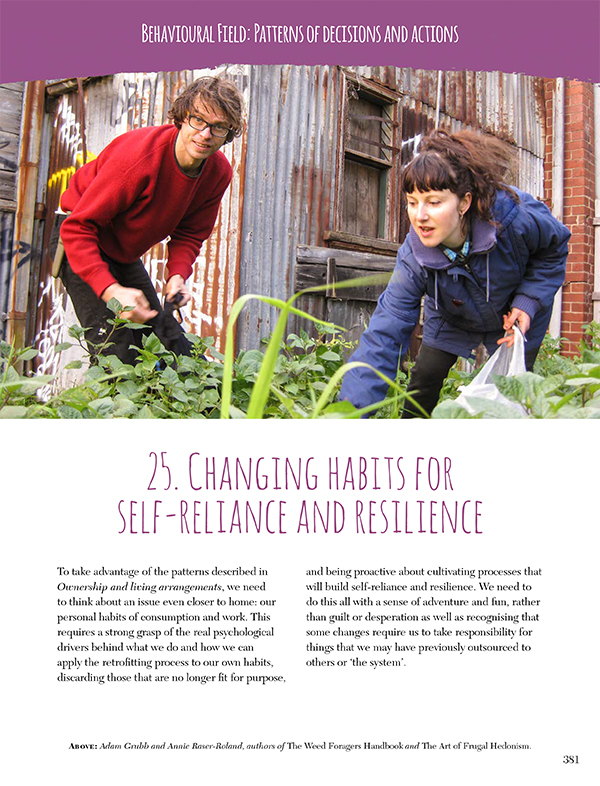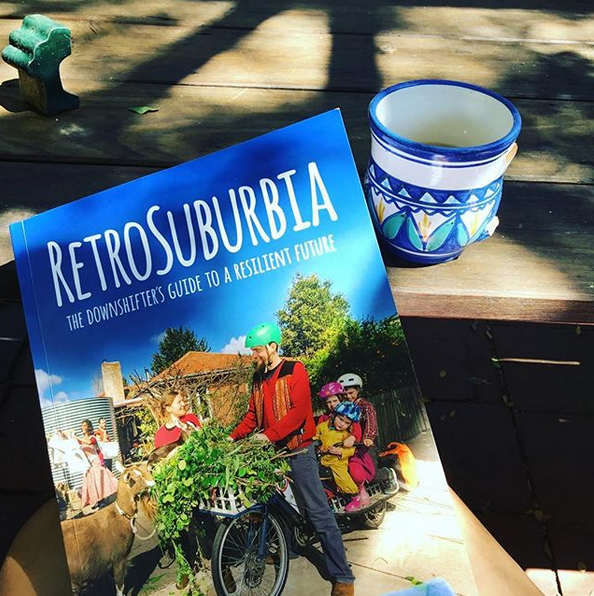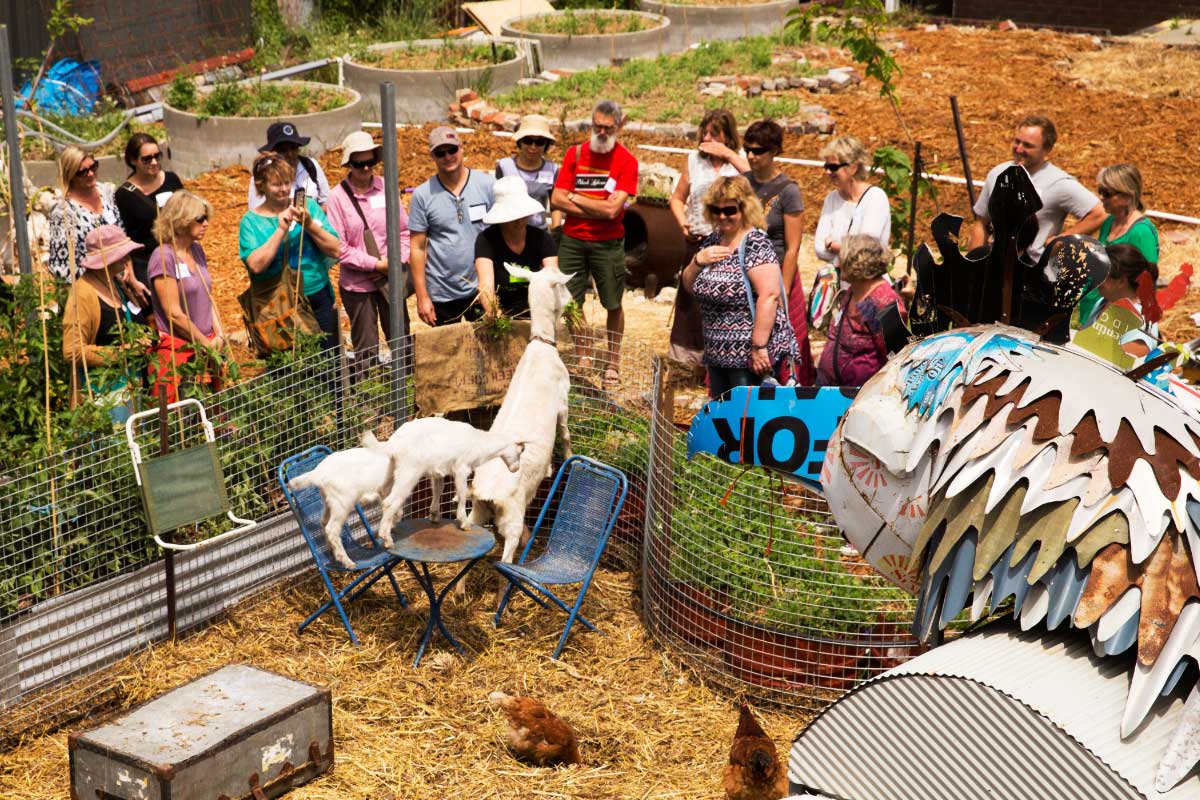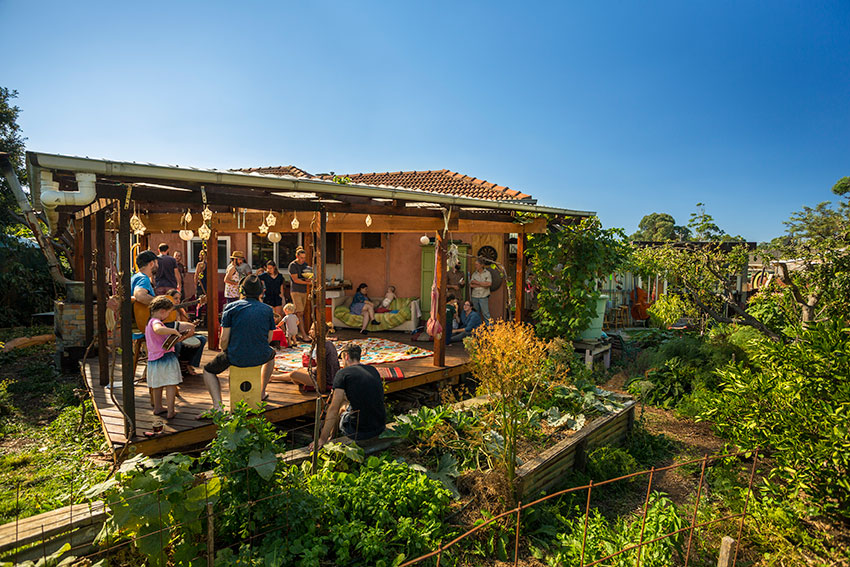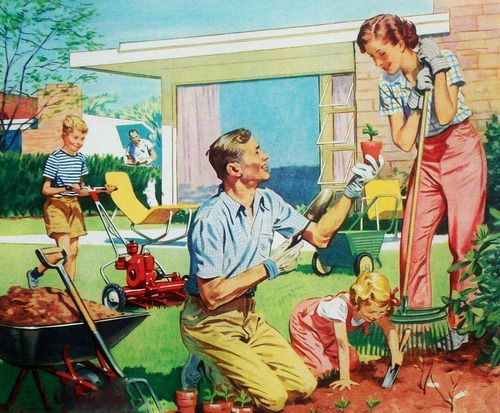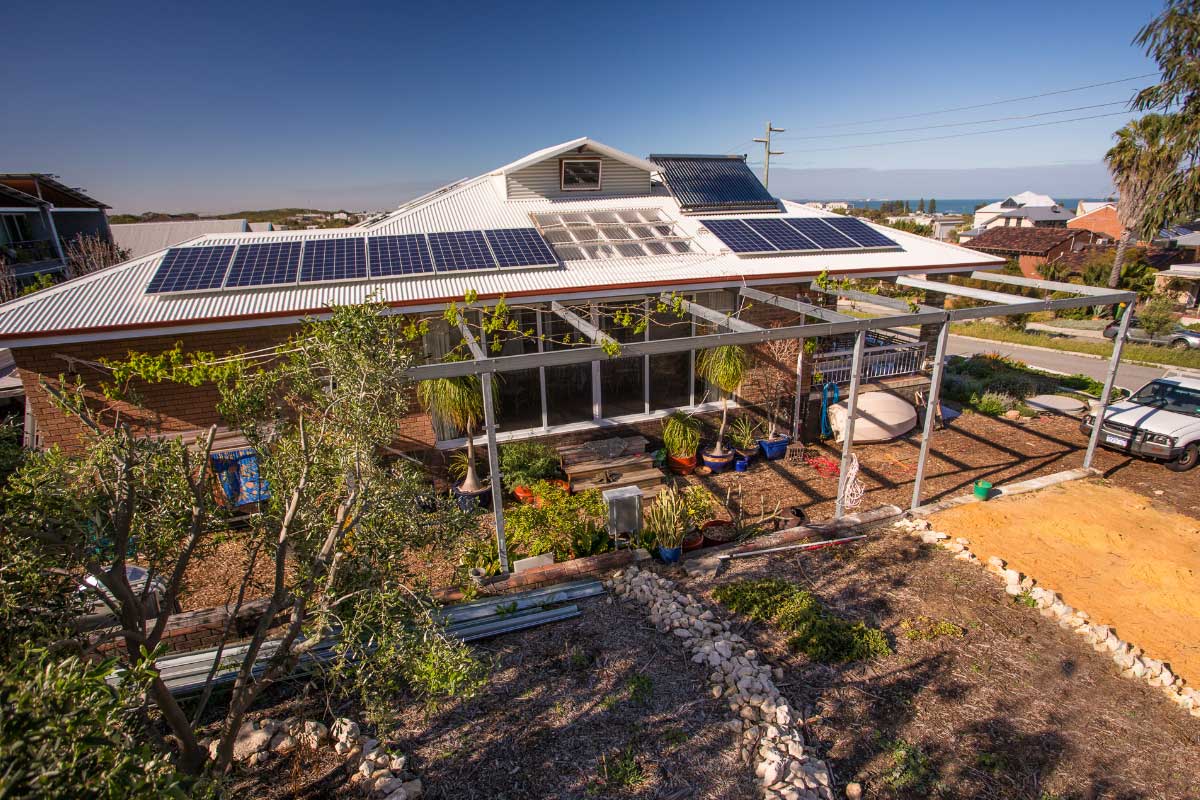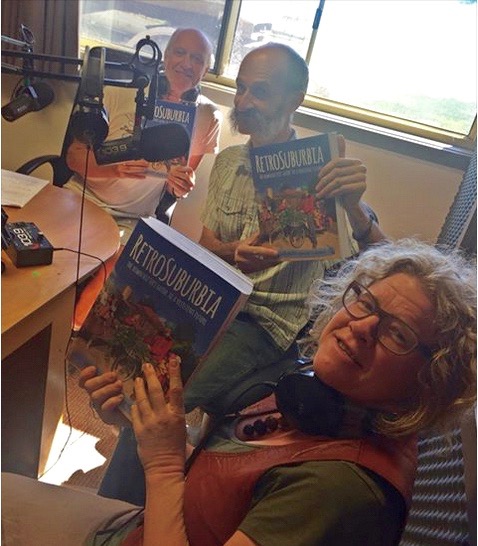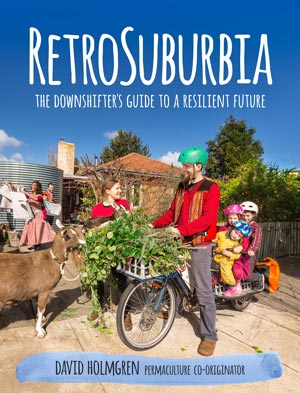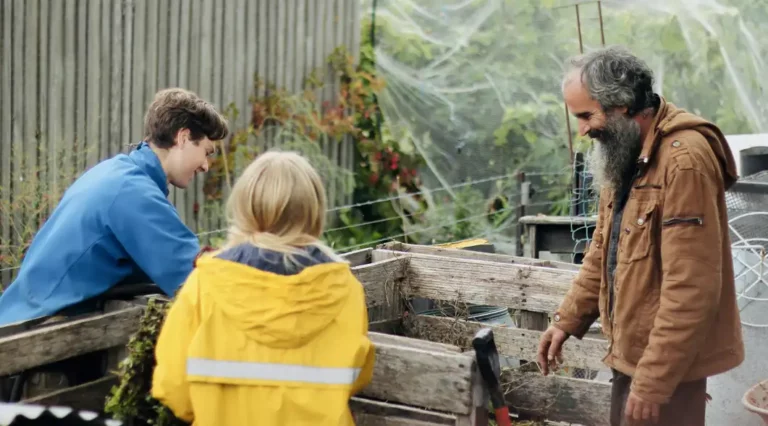Watts Permaculture Case Study
The Story

Goshen & Katrina were looking for a small family home within walking distance to schools, transport and shops. In 2008 they found a renovated, 1950’s brick-veneer home on 1,000m² of land only 3 minutes walk from the high street. The block had been almost entirely cleared as the previous owner’s intention was to build units, but luckily these plans fell through, and the potential for an immense permaculture garden was immediately apparent to the new owners!
The renovation was (unfortunately) not very eco-minded, no insulation, gas central heating and a very hot westerly aspect to the new ‘sunroom’.
Some changes were made (low-hanging fruit); like solar system, ceiling insulation, decommissioning the central heating and installing an efficient gas wall-heater and passive solar heater. Other changes included replacing down-lights with just two compact fluro globes, and plumbed in a water tank to toilets and laundry. It’s not an eco-home, but allowed for comfortable living on a much reduced energy budget.
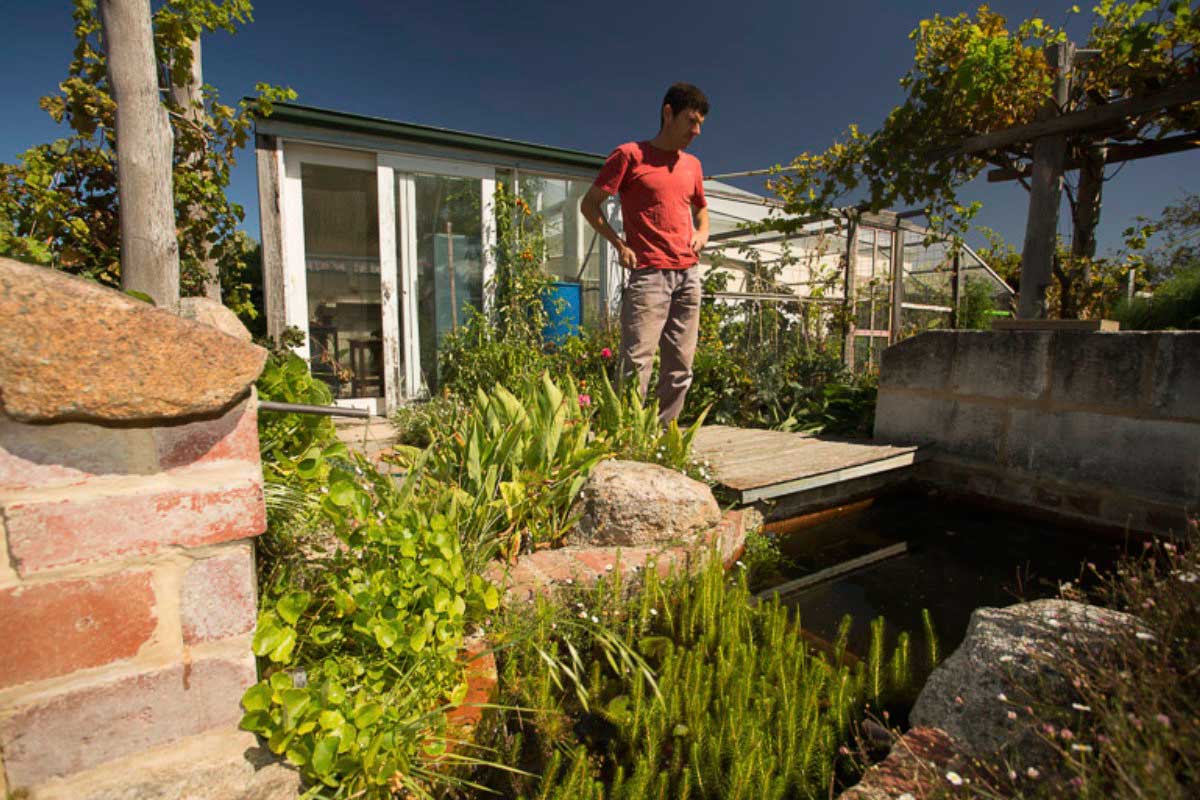
With such a blank canvas for the garden, the hunt was on for materials from the word go. Recycled bricks, used pavers & wood of all sizes and shapes were collected and stockpiled. Mulch, straw and trailer loads of stable manure were collected for the garden.
Major infrastructure installed included additional decking area with a 5,000lt bladder tank underneath, additional water tanks, paving and central plunge-pond (on a budget). A custom built glass house – built with the help of Goshen’s dad in 2010 (at the same time of the arrival of their son Asher), and the ‘anti-aviary’ completed the major infrastructure and contributes significantly to the productivity of the site and the well-being of the people involved with it.
Challenges have included multiple battles with various invasive grasses, heavy clay soil, drainage and difficulties directing water flows on a flat site.
Permaculture features prominently – with nearly all recycled materials, water flows, rainwater harvesting, chickens & guinea pigs, food forest area, and multiple compost systems operating simultaneously.

Resilience
Although connected to mains electricity, water and gas (all used responsibly of course); small investments have been made in resilience and backups for these major functions. There is 3000lt of clean tank water in a shade-house that isn’t connected
to a pump. Indoor fire and a rocket stove outdoors could be utilised for heating and cooking, and small solar panels & rechargeable batteries – for what extent power is actually required in case of an outage.

Waste
All garden and kitchen waste is composted, especially with the help of the chickens, worms and guinea pigs. Recycling is put out around once a month, and the general waste bin rarely more than every third week.
- The gardens are maintained on rainwater for 11 months of the year on average.
- Inputs: Straw, odd bag of manure, chicken feed, coffee grounds from café, lawn clippings from contractors.
- 32 varieties of herbs & dozens of edible weeds
- 37 fruit & nut trees
- 6 varieties of berries
- Areas under production: 100m² (intensive / veg garden); 250m² (food forest & perennial style permaculture); Potential for much more…

Current & Future Plans
In 2013, Goshen closed down his own retail business, with the proceeds enabling the family to be debt free.
In 2015, “Watts Permaculture” was officially launched, with multiple (if still very small) income streams from plant and produce sales, permaculture design and some permaculture landscaping work. Katrina works in Geelong on a part time basis, allowing the permaculture business to establish without pressure of supporting an entire family.
The potential to earn an income from permaculture in an urban setting is being explored, including the recent addition of a mini market garden in a land-share arrangement, supplying veg boxes and produce to a local restaurant or two. Services are in high demand, and the future looks bright.
Visit: wattspermaculture.com.au
Summary + Statistics
Retrosuburban Real Estate Checklist rating: prior to retrofitting; 135, currently; 183 (5 suns)
Location: Belmont, Geelong, Victoria Small City (pop. 180,000)
Rainfall: 457mm
Soil: Heavy clay, with shallow loam
Build: 1950’s brick-veneer on stumps
2016 Property Value: AU$450,000
Household: Family of 3: mother, father and 1 child (6yo)

Land Size: 1000m²
Floor space: 150m²
Roof area: 164m² + 40m²
Water tank storage: 11,500lt
Tank water use: 200lt p/d summer
Mains water use: 153lt per day
Power: 1.1kW Grid-tied solar. Annual Power exported: 820kWh
Annual Power imported: 1,550kWh
Av. Power produced: 4kWh p/d
Av. Power used: 6kWh p/d
Annual Gas used: 25367 MJ
Food production: Majority of vegetables, fruit and eggs
Waking hours at home: 75% One adult works part time, other at home.
Site Plan

More Case Studies

In December 1998 Alistair Tuffnell bought a rundown workers cottage for $156,000. The cottage/house is extremely well located to all services. Alistair’s partner Christine Baro moved into the house in 2001. For the next several years Alistair and Christine focused on paying off the mortgage on their home;
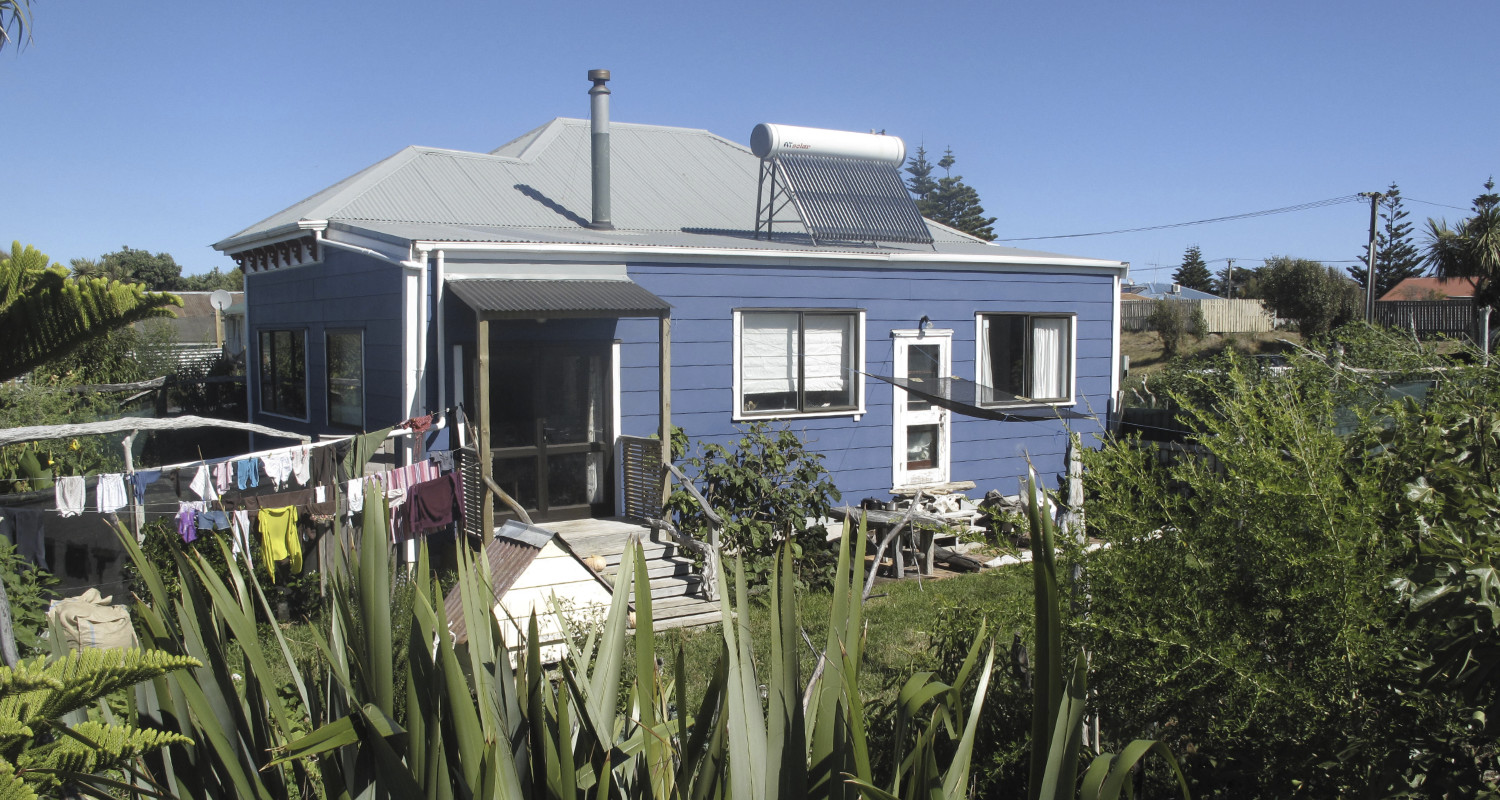
In June 2010 Dani and Nelson Lebo were looking for a ‘do-up’ property to demonstrate that ‘eco-homes’ aren’t only the domain of the wealthy, and that a sustainable lifestyle can be within reach of almost anyone. The Eco Thrifty Renovation project would be both their home and a ‘classroom’ for...

Rachel purchased this property in 2017 as an old house in a suburb of quarter acre blocks, with a gently sloping, grassy backyard. The only established fruit tree was a heavily pruned fig in the middle of the lawn. Various dead pot plants, garden ornaments and a few pieces of...

How Rishi transformed a bare and compacted rental patch into a permaculture oasis We met Rishi as a participant in our 2023 Rocklyn Ashram PDC and were awed by his ability to creatively use and respond to change (moving countries, renting in Melbourne), use edges and value the marginal (a...
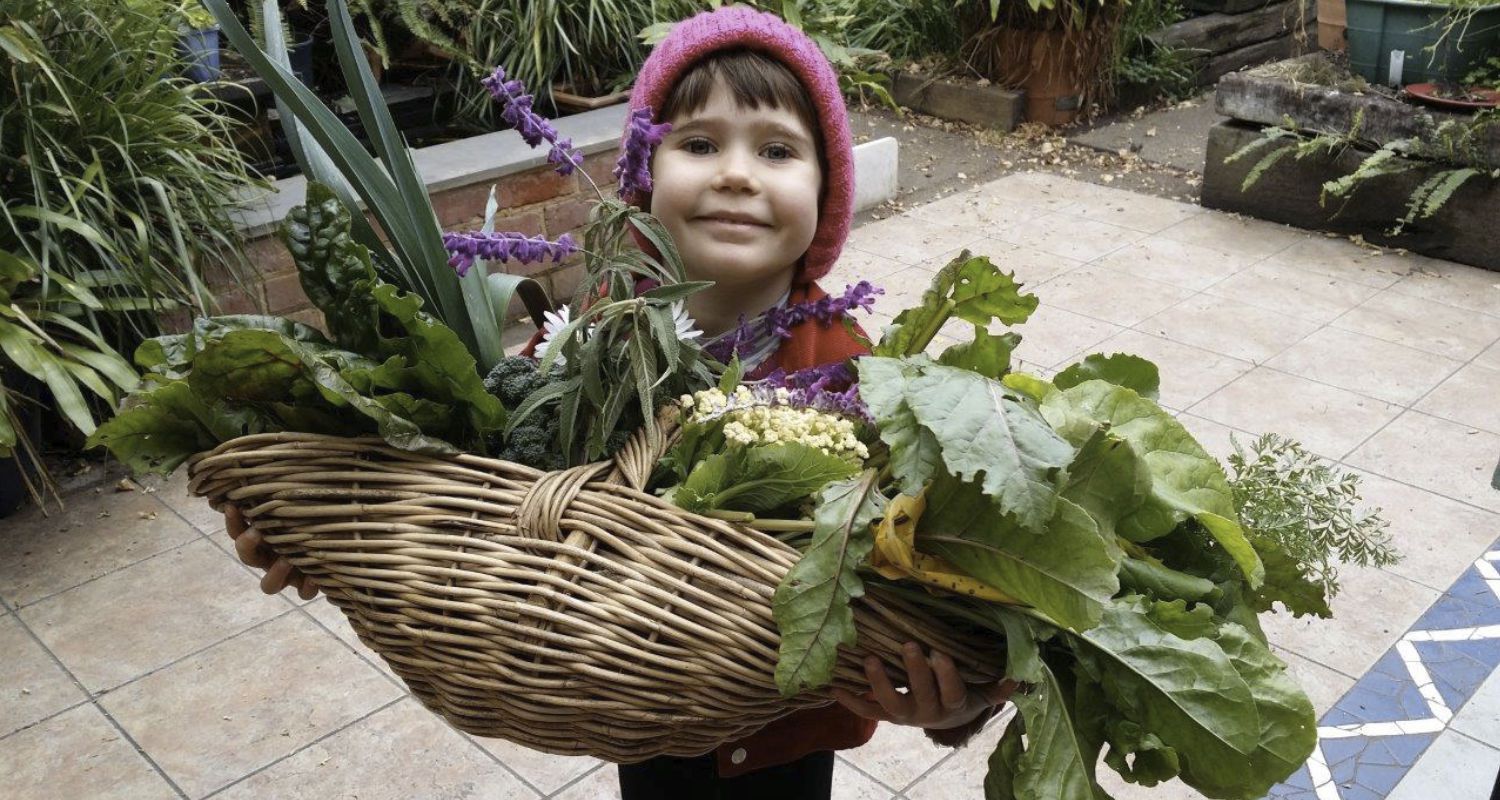
In 2000 Teresa and Jake were looking to relocate to Adelaide and they purchased an old bungalow in Bowden. Bowden is an inner city suburb approximately 3km from the GPO with interesting industrial and heritage influences.

In early 2014, we relocated to Lilydale, Victoria from south-east Queensland to pursue new work opportunities. Our plan was to stay for around three years and use this period of settlement to learn to grow food.
